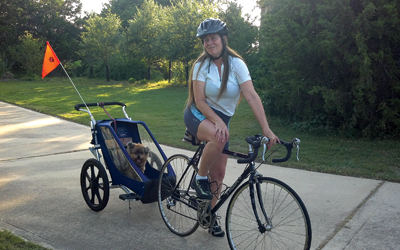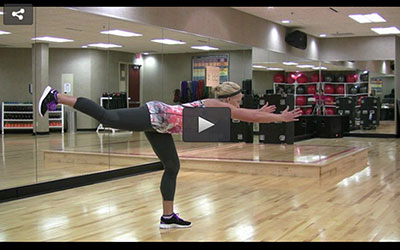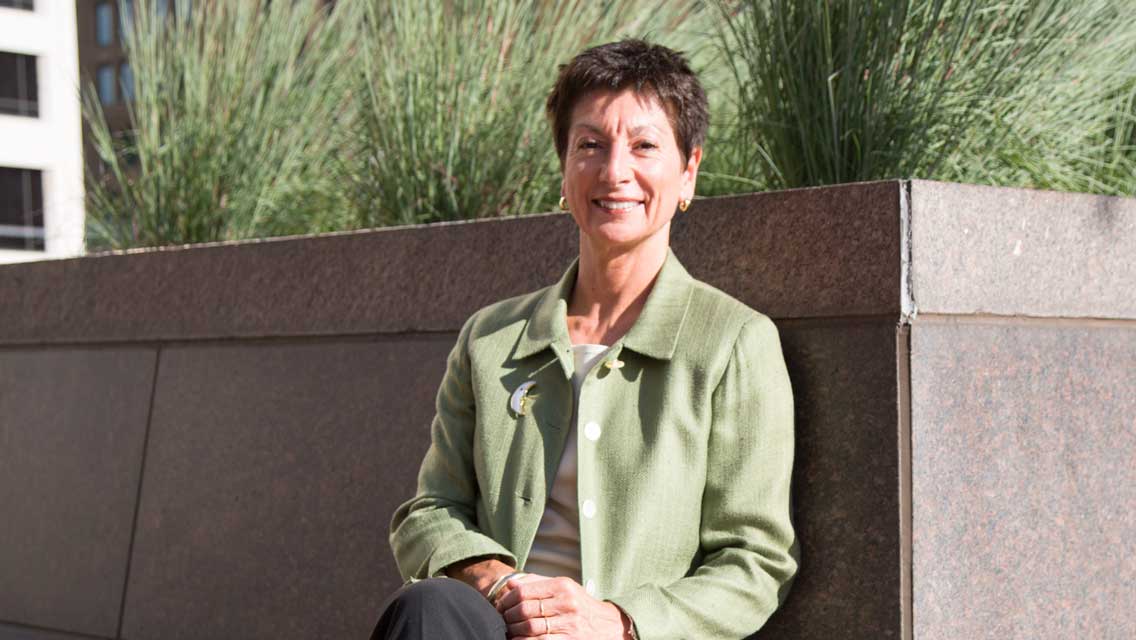As strange as it sounds, an accident was both the best and worst thing to happen to me in 2011.
I have always led a relatively active lifestyle. I enjoy running the occasional 5K or riding 40 miles in charity bike events. My idea of a perfect vacation involves kayaking, snow skiing or scuba diving. I love to water-ski and recently learned to sail. But in July 2011, it seemed all that might be taken away.
Dog Days
I was volunteering with a local animal rescue group near my home in Austin, Texas, working with homeless dogs, and was assigned to walk a deaf pit bull named Dolly. At 57, I was nervous that my energy level wouldn’t match hers, but Dolly was so eager that I was won over by her enthusiasm.
We were having a great time, playing a game of fetch with a stick, when it happened: She zigged and I zagged, and in her excitement, Dolly crashed into my left leg. My body fell to the side, but my planted foot and lower leg did not.
I was stunned and hurting, but as Dolly ran from my grasp, I struggled to my feet to run after her — or at least I tried. The pain was excruciating, and it worsened with every move.
When Dolly was finally safe with other volunteers, I assessed the situation, and the realization of what had happened crept in. I attempted to stay positive, but a few minutes later, when I tried to stand, I knew it was bad.
I rushed to a doctor, but there was little anyone could do. The diagnosis came in: I’d “blown out” my knee.
Two of my knee ligaments, the ACL and MCL, had completely ruptured, and my meniscus, the shock-absorbing cartilage between the long bones, had torn. A later MRI revealed a bone bruise caused by the clanging together of my loose, misaligned leg bones that happened as I had run to corral Dolly. I had achieved the highest possible grade of disruption for both my ACL and MCL, a dubious distinction that left my knee essentially disconnected — dangling by a thread.
Facing Reality
I couldn’t sleep or even roll over in bed without pain, and every time I got up from a chair or climbed out of bed I felt my leg bend at strange, unpleasant angles. The simplest tasks became complicated, painful or impossible. Dressing was tricky, climbing out of the shower was dangerous, and getting in and out of a car required elaborate preparation.
Over the days and weeks that followed, I fell into a deep depression. I slept heavily, sometimes for up to 14 hours a day. When I was awake, I tried to deny what had happened to me, to bargain with fate and rationalize the truth.
I realized there would be no ski trips that year, no snorkeling vacation, no travel of any kind. I had signed up for several local 5K runs that I’d no longer even be able to attend. The race bibs and souvenirs I’d accumulated from past events just seemed to mock me.
My general practitioner referred me to a nearby orthopedic practice. There, I was assigned the first available doctor, a physician whose immediate and only recommendation was surgery. His manner was brusque and dismissive, and I left his office in tears.
In retrospect, however, his insensitivity was exactly what I needed to get motivated. Following my second visit with him, I resolved to find another doctor and learn what I needed to do to recover.
Doing It My Way
I searched the Web and learned that swimming is often an important form of therapy for knee injuries, both before and after surgery. As I waited for the appointment with my new doctor, I strapped on a neoprene knee brace and approached the pool at my fitness center.
I discovered, to my amazement and joy, that I could walk in the water. For the first time in weeks, I could move my leg almost normally and support my weight in the water without pain. The simple act of walking was thrilling and it positively affected my ability to move on land.
I measured my progress every morning when I walked my dog. Camille and I have walked every morning of her 13 years through all types of weather, but our first forays with me on crutches were little more than slow staggers followed by extended rest. We didn’t quit, though, and now I believe that if I hadn’t made the commitment to take care of her and had given in to my depression, my recovery might have taken much longer.
Over time, a new doctor helped me sharpen my focus and better weigh my options. He recommended physical therapy once a week, and with his encouragement, I began to believe I might recover. At a later visit, he revealed that he had torn his own ACL several years before and, with the aid of a custom brace, he still enjoyed sports — even basketball and skiing. As an orthopedist, he acknowledged there were risks, even with the best brace, but he also pointed out that there are risks with a healthy, unbraced knee as well.
I decided to follow his example and forgo surgery. If I find that I have instability that I cannot manage in the future, I can always change my mind. But I might never need it at all. In the meantime, I am focusing on the things I can do to build strength in the muscles and ligaments surrounding my missing ACL, like swimming, cycling and easy jogging on soft surfaces.
This summer, I combined my love of water and cycling with a pontoon-assisted water bike on Austin’s beautiful Lady Bird Lake. Maybe someday I’ll even try the increasingly popular stand-up paddleboarding.
Active Gratitude
These days, I wear a brace only when I’m running. The muscles around my knee have grown stronger and, to a degree, they compensate for the lack of a functional ligament, enabling me to once again do many of the things I loved to do before.
For our anniversary in February 2012, my husband and I went on a snorkeling adventure to Cozumel, and my knee performed wonderfully. I have even attended my first charity event: a low-intensity “Wagathon Walkathon,” benefiting the very organization that fostered my pit-bull pal, Dolly. It was the perfect steppingstone to walking — and maybe even running — a 5K again.
While I wish, of course, that the accident had never happened, I cannot help but feel grateful for the experience. Working around the injury has helped me learn to organize and plan ahead. It has encouraged me to slow down and reflect, and appreciate little things I once took for granted. When I take it easy and do things mindfully, I’m able to participate in activities I once enjoyed without thinking, and that makes me happy.
I believe my injury has made me a stronger, better person.
Success Summary
Meet: Jay Stewart, age 58, proud mother, enthusi- astic charity-event participant and co-owner of an architectural engineering firm with her husband, Gil.
Big Achievement: Bouncing back from a serious knee injury without invasive surgery.
Big Inspirations: The support of her family and dog, who showed abundant love throughout her recovery.
What Worked: Setting an attain- able goal for ex- ercise, activity and attitude; using slow, diligent and mindful movements.
What Didn’t: Pushing too hard.
Words of Wisdom: Let your mind be calm, listen to your body, and trust your instincts.




This Post Has 0 Comments